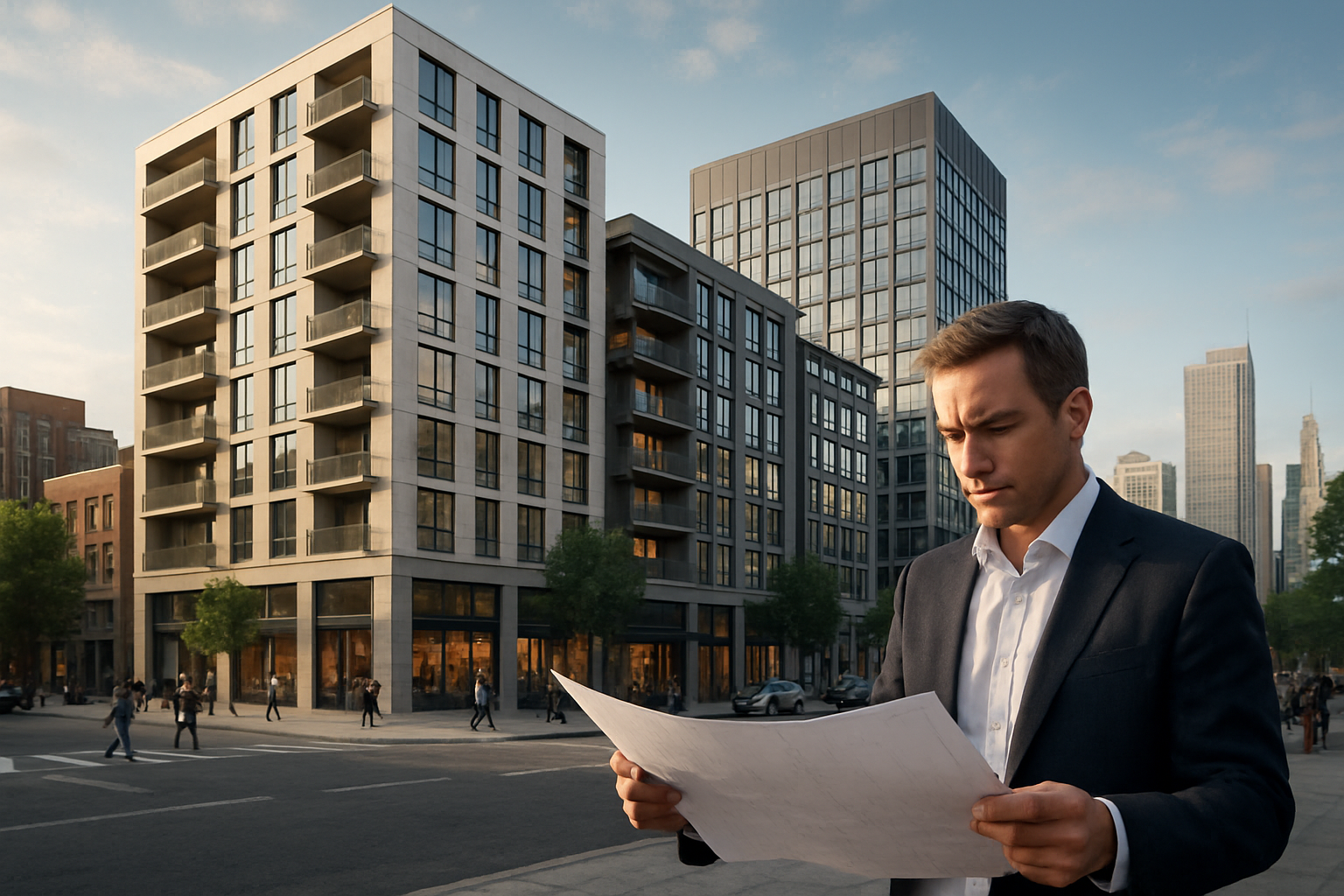Title: Adaptive Reuse: Transforming Commercial Spaces into Residential Gems
In a world where urban landscapes are constantly evolving, a new trend is reshaping the real estate market: adaptive reuse of commercial properties for residential purposes. This innovative approach is not only revitalizing forgotten spaces but also addressing housing shortages in densely populated areas. As cities grapple with limited land and changing work dynamics, the conversion of offices, warehouses, and retail spaces into unique living quarters is gaining momentum, offering exciting opportunities for investors and homebuyers alike.

Understanding the Market Dynamics
The shift towards commercial-to-residential conversions is underpinned by compelling market dynamics. With the rise of remote work, many companies are downsizing their office footprints, leaving vast commercial spaces vacant. Simultaneously, housing demand in urban centers continues to grow, creating a perfect storm for adaptive reuse projects. According to recent market data, cities like New York, London, and Sydney have seen a 30% increase in commercial-to-residential conversion proposals over the past two years, highlighting the growing appetite for these transformative projects.
Financial Implications for Investors
For real estate investors, adaptive reuse projects present a unique value proposition. While initial costs can be higher due to extensive renovations and zoning changes, the long-term returns often outweigh the investment. Commercial properties in prime locations can be acquired at competitive prices, especially if they’ve been sitting vacant. The conversion process, when executed strategically, can result in distinctive residential units that command premium rents or sales prices. A recent study by Urban Land Institute found that adaptive reuse projects yielded an average of 12% higher returns compared to new residential constructions in similar locations.
Challenges and Considerations
Despite its potential, adaptive reuse comes with its share of challenges. Navigating complex zoning laws, adhering to residential building codes, and managing unexpected structural issues can be daunting. Developers must also consider the preservation of historical elements in older buildings, which can add both charm and complexity to the project. Moreover, the success of these conversions heavily relies on location. Not all commercial spaces are suitable for residential use, and thorough market analysis is crucial before embarking on such projects.
Impact on Urban Planning and Sustainability
The adaptive reuse trend is reshaping urban landscapes in more ways than one. By repurposing existing structures, these projects significantly reduce the environmental impact associated with new constructions. They contribute to urban density without expanding city footprints, aligning with sustainable development goals. Furthermore, these conversions often breathe new life into neglected neighborhoods, spurring local economic growth and community revitalization. Urban planners are increasingly recognizing the role of adaptive reuse in creating more resilient and livable cities.
The Future of Living Spaces
As the lines between work and home continue to blur, adaptive reuse projects are at the forefront of redefining urban living. These conversions often result in unique living spaces that appeal to a new generation of city dwellers seeking character and convenience. From loft apartments in former factories to micro-units in converted office buildings, these spaces offer a fresh take on urban living. The trend is also encouraging mixed-use developments, where residential, commercial, and recreational spaces coexist, fostering vibrant, walkable communities.
Navigating the Investment Landscape
For investors looking to capitalize on this trend, due diligence is key. Success in adaptive reuse projects requires a deep understanding of local real estate markets, zoning regulations, and construction costs. Partnering with experienced architects and contractors who specialize in conversions can mitigate risks and ensure smoother project execution. Additionally, investors should consider the target demographic for these unique properties, as they often appeal to specific market segments, such as young professionals or empty nesters seeking urban lifestyles.
Conclusion: A Transformative Trend
The adaptive reuse of commercial spaces for residential purposes represents a significant shift in the real estate landscape. As cities evolve and adapt to changing societal needs, these innovative projects offer a sustainable solution to urban housing challenges while preserving architectural heritage. For investors, developers, and homebuyers alike, this trend opens up new possibilities in urban living and investment. As we look to the future, adaptive reuse is poised to play a crucial role in shaping resilient, dynamic, and livable cities for generations to come.




